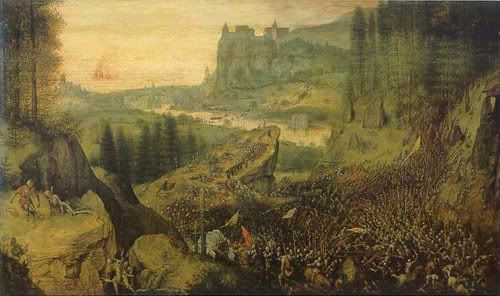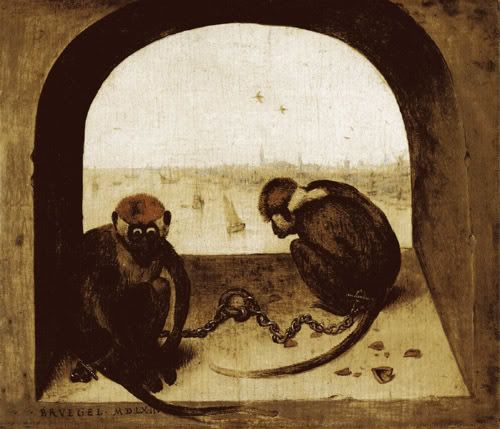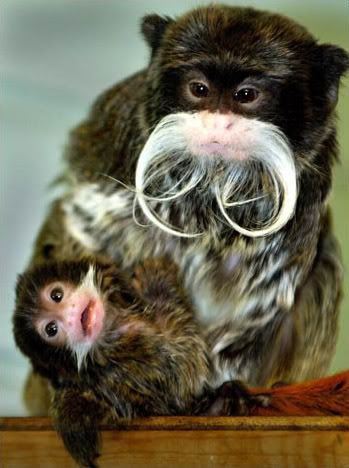Bruegel and the Emperor Tamarin
Both Joachim Patinir (about whom I wrote in an earlier post) and Pieter Bruegel the Elder lived and worked in what is now Belgium, but they did so at different times. Whereas many of Patinir's works were created between 1515 and 1525, Bruegel's tend to date from the years 1555 to 1570. Still, there are some similarities in their paintings. The Hay Harvest, for example, has some of the same softly rolling hills; the same scattered buildings, rocky crags, and towns; the same clear view far into the distance; and the same gradation from deep green to deep blue that can be found in Patinir's landscapes.
In general, however, they are of course very different painters. Patinir was primarily a religious landscape painter, while Bruegel was a much more prolific artist who frequently depicted ordinary farmers and townspeople going about their everyday lives (even in paintings like Census at Bethlehem, whose subjects are technically religious, historical, allegorical, or mythical). Bruegel's farmers and townspeople, furthermore, are characterized by their solidity; even their clothes tend to have few folds and bold colours. His landscapes, on the other hand, tend to softness and (I should think) realism, as in The Magpie on the Gallows. As for the colour palette, it is often subdued (e.g. the earthy colours of The Return of the Herd, the muted autumnal colours in The Magpie on the Gallows, the white, black, and grey-blue of The Hunters in the Snow).

That, at least, is the impression I get from the images I've seen, which are not always reliable as far as colour is concerned. In looking through Bruegel: Sämtliche Werke, for example, I was struck by Der Selbstmord Sauls, a painting that depicts the battle between two hosts (Israelite and Philistine) in the rocky countryside. The battle, the distant red flames, and the murky yellow-brown that dominates the painting combine to create an epic, somewhat volcanic, even apocalyptic effect (reminiscent of Lord of the Rings, actually).
In the following reproduction from Art and the Bible, however, the effect is quite different.

The dominant colour, to begin with, is a sort of mossy green that evokes life and growth, rather than death and destruction. The pale green-blue silhouette of the distant castle is, if anything, fairy-tale-like. Well, both versions appeal to me, but it is interesting to see how much reproductions can vary in terms of colour and resolution, and how much the differences affect one's perception of the paintings.
By the way, to move on to the monkey portion of this post, another Bruegel painting that caught my eye was the following one (Two Small Monkeys, from the aforementioned book):

The authors of the book speculate that the painting is meant to illustrate the Dutch proverb about going to court for the sake of a hazelnut (i.e. the monkeys risked their freedom for something insignificant). Either way, there is a sad contrast between the pair of dejected monkeys and the pair of flying birds -- between the plain, thick walls in the foreground, and the dreamlike city in the background.
The monkeys in the painting, by the way, are not Emperor Tamarins. Being monkeys, though, they provide a convenient excuse for a transition to the following photo (from Derecho Animal):

Cute, aren't they? :o) Apparently, they were named after Wilhelm II, "ehemaliger Kaiser des Deutschen Reiches" and fellow owner of a respectable moustache (though, upon examination, it does not much resemble those of the Emperor Tamarins).
Note: The above images were edited using Adobe Photoshop. (Come to think of it, I'm not sure why I keep including this note. It's not as if I have any obligation to advertise for Adobe Photoshop, and it probably isn't necessary to say that the images were edited (perhaps it goes without saying). I'll just omit the note from now on.)

0 Comments:
Post a Comment
<< Home